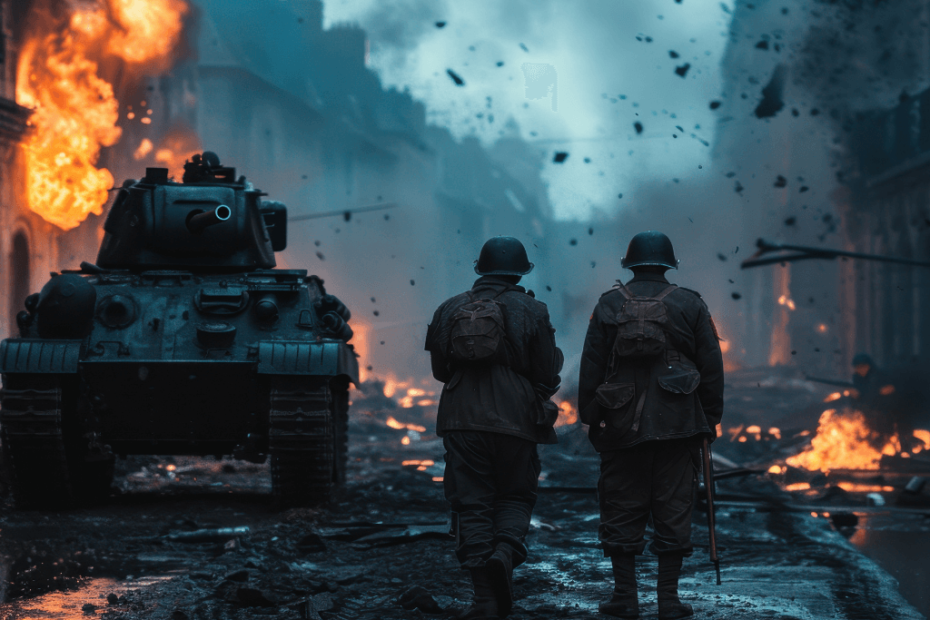Modern Global War Tensions: A Pressing Issue
Modern global war tensions have become a significant threat to peace and stability. These tensions stem from rivalries, resource disputes, and advancing technology.
Unlike past conflicts, these tensions are complex. They involve cyberattacks, economic sanctions, and proxy wars.
Today’s wars, like the Ukraine war, show how regional disputes can escalate in a short time. These conflicts do more than disrupt economies. They displace millions and create long-term instability. The effects ripple across borders, affecting countries that have no direct involvement.
This article will explore the causes of these tensions. It will also examine their effects on vital regions. We’ll also look at technology’s role in modern conflicts.
Then, we’ll discuss strategies for peace. This guide answers your questions. It covers the first modern war and how today’s conflicts shape the world.
Table of Contents
Understanding Modern Global War Tensions
Modern global war tensions are unlike those of the past. They involve old military conflicts and new challenges, like cyber warfare and sanctions. These tensions often arise from unresolved disputes over borders, resources, and political ideologies. Even a local conflict can have global repercussions in today’s interconnected world.
One significant difference in modern conflicts is the rise of proxy wars. Powerful nations, instead of fighting directly, back smaller states or groups to fight for them. For example, the Ukraine war involves Russia, Ukraine, and NATO countries. This indirect approach increases the scale and complexity of conflicts.
Economic rivalry is another crucial driver of war tensions. Nations compete for critical resources like oil, gas, and water. This can lead to violent disputes. Resource competition has been at the heart of many conflicts in regions like the Middle East. Trade wars and sanctions, like those between the U.S. and China, cause economic instability. This fuels global tensions.
Technological advancements have added a new layer to modern conflicts. States now use cyberattacks, misinformation, and hacking to weaken rivals. These tactics are less visible than traditional warfare but are as damaging. A single cyberattack can disrupt national power grids or critical infrastructure.
These tensions are not confined to specific regions. Global conflicts have wide effects, from current wars to standoffs in Asia and Africa. We must find the causes and patterns of these tensions. It’s critical to find practical solutions.
References
- Nye, Joseph S. The Future of Power. Public Affairs, 2011.
- Kaplan, Robert D. The Revenge of Geography. Random House, 2012.
- Singer, P.W., and Friedman, Allan. Cybersecurity and Cyberwar: What Everyone Needs to Know. Oxford University Press, 2014.
Causes of Modern Global War Tensions
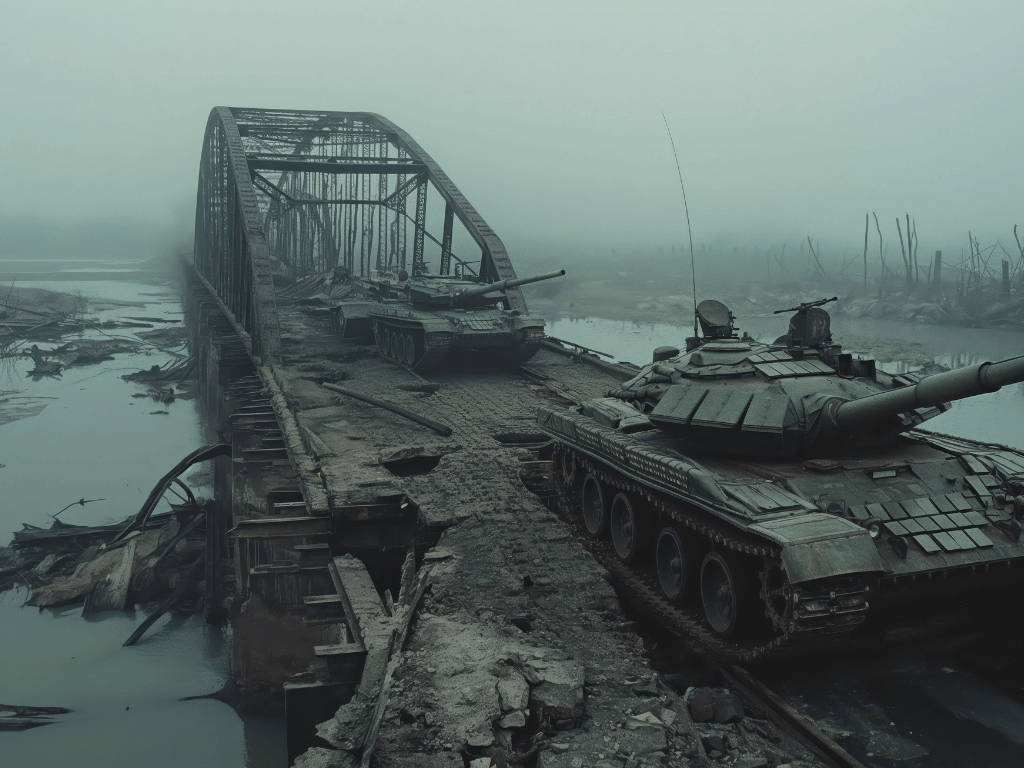
The root causes of modern global war tensions are complex and interwoven. They often come from old rivalries, resource competition, and fast technological advances. Understanding these causes is critical to addressing the conflicts they create.
1. Geopolitical Rivalries
The US, China, and Russia compete for influence. This often leads to conflict. The Ukraine war shows how NATO-Russia tensions turned into a conflict. Similarly, disputes over Taiwan highlight rising tensions in the Asia-Pacific region. These rivalries often create more minor conflicts that destabilize entire regions.
2. Resource Competition
Access to resources such as oil, water, and rare minerals is a significant driver of tension. Disputes over oil fields have led to numerous wars in the Middle East. In Africa, control of water sources like the Nile has caused friction among nations. As these resources become scarcer, the likelihood of conflict grows.
3. Economic Disparities
Economic competition, such as trade wars and sanctions, also fuels tensions. The U.S.-China trade war has strained relations and hurt global markets. Sanctions, though less direct than military actions, can weaken economies. This makes it harder to achieve diplomatic resolutions.
4. Ethnic and Religious Divisions
Many conflicts stem from deep-seated ethnic and religious divides. In South Asia and the Middle East, these divisions have caused long-standing violence. For example, disputes over land and religion fuel the ongoing Israel-Palestine conflict. External powers often exploit divisions for their gain. This worsens the tensions.
5. Technological Advancements
Cyberwarfare and autonomous weapons have changed the way nations fight conflicts. State-sponsored cyberattacks disrupt essential systems, while misinformation campaigns destabilize governments. Advanced technologies let nations fight without direct military action. This makes modern warfare more complex.
These causes rarely exist in isolation. They often overlap, creating intricate conflicts that are challenging to resolve. For example, resource competition is linked to geopolitical rivalries in the Middle East. Proxy wars exploit ethnic divisions. Understanding these connections is essential for finding practical solutions.
References
- Nye, Joseph S. The Future of Power. Public Affairs, 2011.
- Kaplan, Robert D. The Revenge of Geography. Random House, 2012.
- Singer, P.W., and Friedman, Allan. Cybersecurity and Cyberwar: What Everyone Needs to Know. Oxford University Press, 2014.
Key Regions Experiencing War Tensions
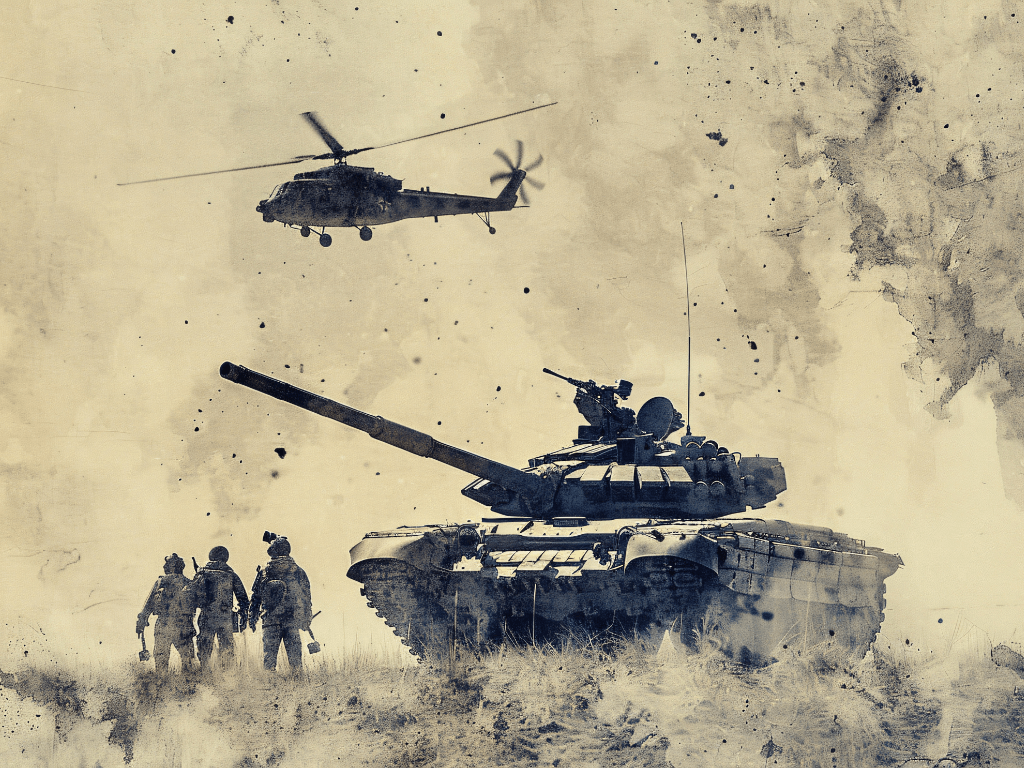
War tensions affect many parts of the world. Some regions are less stable due to rivalries, resource competition, and old conflicts. We must understand these hot spots. They are the root causes of global tensions.
1. The Middle East
The Middle East remains one of the most volatile regions. Disputes over resources, religious divisions, and geopolitical rivalries are common. Conflicts like the Israel-Palestine war and Iran-Saudi tensions have shaped the region’s politics.
Competition over oil reserves and water resources only adds to the complexity. These issues often draw global powers into the area, further escalating tensions.
2. Eastern Europe
Eastern Europe is now a hotspot for modern war tensions, mainly due to the Ukraine war. This conflict stems from Russia’s desire to expand its influence. NATO is committed to protecting its members. The war has led to widespread displacement, economic instability, and heightened global tensions. Other areas, like the Balkans, have unresolved disputes. They could reignite in the future.
3. Asia-Pacific
The Asia-Pacific region is experiencing rising tensions due to China’s territorial ambitions. The South China Sea and Taiwan disputes show a rising China-U.S. rivalry with its neighbors. North Korea’s nuclear program raises fears of conflict and instability in the region.
4. Africa
Africa faces many conflicts driven by resource competition and ethnic divisions. The Sahel is a hotspot for insurgencies. Water access disputes, like those over the Nile, strain Ethiopia, Sudan, and Egypt. Many African nations struggle with internal instability, further complicating efforts for peace.
5. The Arctic
The Arctic has emerged as a new frontier for geopolitical rivalry. Melting ice caps are opening access to untapped resources and shipping routes. Nations like Russia, the U.S., and Canada are competing for control. This is increasing military activity in the region. The Arctic is less violent than other hotspots. But its strategic importance is vital.
These regions show the interconnected nature of modern global war tensions. Conflicts in one area often ripple across borders. They affect global trade, economies, and politics. Addressing tensions in these hotspots requires international cooperation and innovative solutions.
References
- Nye, Joseph S. The Future of Power. Public Affairs, 2011.
- Kaplan, Robert D. The Revenge of Geography. Random House, 2012.
- Singer, P.W., and Friedman, Allan. Cybersecurity and Cyberwar: What Everyone Needs to Know. Oxford University Press, 2014.
In 2024, several global conflicts threaten stability. They need close attention.
1. Israel-Hamas Conflict
In the past year, Israel has won key battles. This came after a surprise attack by Hamas that caused heavy losses. Israel has killed key Hamas and Hezbollah figures, including Sinwar and Nasrallah. It has also crippled their military capabilities. Most of Hamas’s and Hezbollah’s forces are dead or captured. They have destroyed much of their weaponry.
Additionally, Israel has deflected attacks from Iran and degraded its air defense systems. The Israeli high command sees these conflicts as part of a larger war with Iran and its proxies. As Israel faces a likely long conflict, it strains its society.
This is especially true for reserve soldiers and their families. Despite this, there is a shared determination to continue fighting for Israel’s survival.
2. Russia-Ukraine War
The Russia-Ukraine conflict, ongoing since 2022, is destabilizing Eastern Europe. Hostilities persist despite sanctions and diplomatic efforts. This has caused major humanitarian crises and economic disruptions in the region.
3. Sudanese Civil War
Sudan has been in a civil war since April 2023. It is due to a power struggle between the Sudanese Armed Forces and the Rapid Support Forces. The conflict has killed thousands and displaced millions, worsening the humanitarian crisis.
4. Sahel Region Insurgency
The Sahel region in Africa faces ongoing insurgencies. Militant groups exploit political instability and economic hardship. Countries like Mali, Niger, and Burkina Faso suffer greatly. Frequent attacks hinder their development and security efforts.
5. Yemen Conflict
Yemen’s civil war, which began in 2014, remains unresolved. The conflict has caused one of the worst humanitarian crises. Fighting between Houthi rebels and the recognized government has caused famine and disease. Millions are at risk.
6. Myanmar Civil War
Following the military coup in February 2021, Myanmar has experienced escalating internal conflict. Ethnic armed groups and pro-democracy forces resist military rule. This has caused widespread violence and displacement.
7. Tigray Conflict in Ethiopia
The Tigray region in Ethiopia has been a hotspot of conflict since late 2020. Since a peace deal in 2022, sporadic clashes have continued. They cause humanitarian issues and regional instability.
8. North Korea’s Missile Tests
North Korea’s ongoing missile tests have heightened tensions in the Asia-Pacific region. These actions have prompted international condemnation and increased military readiness among neighboring countries.
9. Iran’s Nuclear Program
Iran’s advancements in its nuclear program have raised global concerns. The 2015 nuclear deal revival efforts have stalled. This has increased tensions between Iran and Western nations.
10. Taiwan Strait Tensions
The Taiwan Strait is a flashpoint. China’s military activities near Taiwan raise conflict fears. The situation has implications for regional security and international trade routes.
Monitoring these conflicts is crucial. Their developments affect global peace and stability.
References:
- “Israel Is Fighting a Different War Now.” The Atlantic, November 2024.The Atlantic
- “10 Conflicts to Watch in 2024.” International Crisis Group, January 2024.Crisis Group
- “Global Conflict Tracker.” Council on Foreign Relations, November 2024.CFR
The Role of Technology in Modern War Tensions
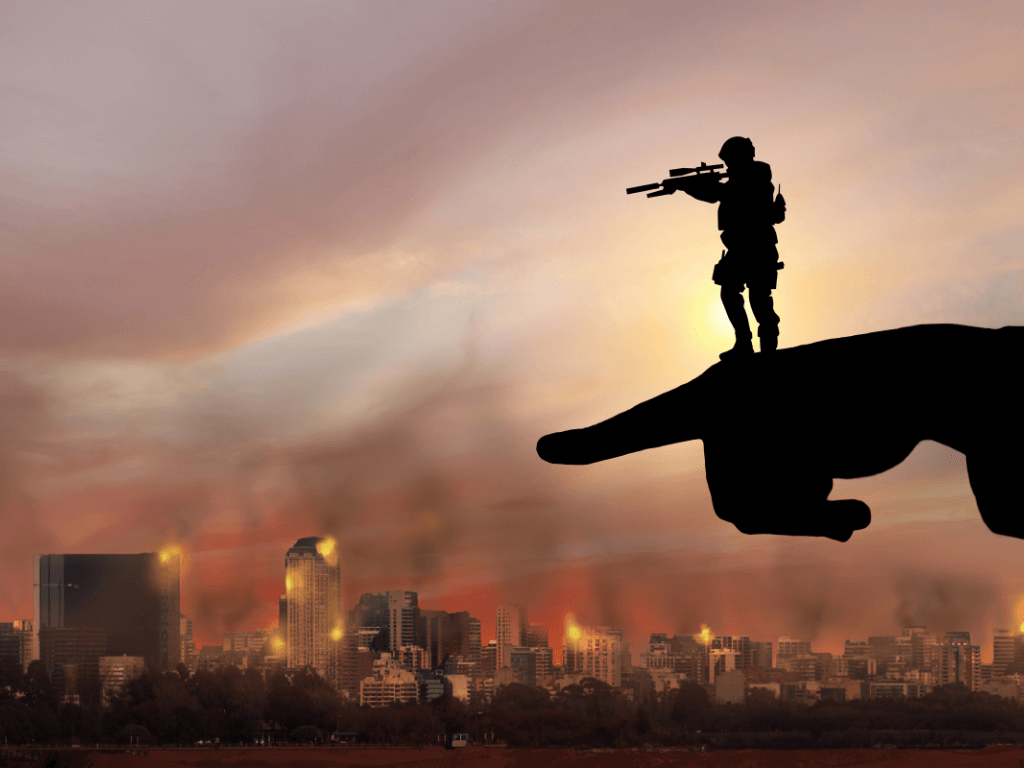
Technology has changed conflict. It has made global war tensions more complex than ever. New tech, from cyber warfare to drones, has altered how nations fight.
1. Cyberattacks and Information Warfare
Cyberattacks have become a powerful tool for state and non-state actors. These attacks target critical infrastructure, like power grids and financial systems. They cause widespread disruption. The Ukraine war has seen many cyberattacks.
They aim to weaken Ukraine’s defense and economy. Misinformation and social media manipulation fuel unrest by spreading propaganda. Thus, information warfare is a new battlefield.
2. Autonomous Weapons and Drones
Autonomous weapons and drones have changed the way we fight wars. These tools allow nations to engage in conflicts without risking human lives. But their use raises ethical concerns, especially in civilian areas. In the Middle East, drone strikes are now standard. They highlight the dual-edged nature of this technology.
3. Surveillance Technology
Advanced systems, like facial recognition and satellite monitoring, are vital in modern conflicts. They are a form of surveillance. These technologies help nations track adversaries and prevent attacks. They raise privacy concerns. They are often misused to suppress dissent in conflict zones.
4. Artificial Intelligence in Warfare
Experts are now using AI-driven technologies to predict conflicts and develop strategies. Nations are investing in AI for everything from battlefield logistics to cyber defense. AI could prevent war by spotting risks early. But it raises the stakes as nations race to outpace each other in technology.
5. The Weaponization of Space
Space has become a new frontier for military competition. We use satellites for communication, navigation, and intelligence gathering, making them critical assets. But this reliance creates vulnerabilities. Nations are developing anti-satellite weapons to disable these systems in conflicts.
Technology has become both a tool for conflict and a means to prevent it. AI and surveillance can help maintain peace. But they raise the risks of global war. We must balance innovation with ethics to avoid future conflicts.
References
- Singer, P.W., and Friedman, Allan. Cybersecurity and Cyberwar: What Everyone Needs to Know. Oxford University Press, 2014.
- Kaplan, Robert D. The Revenge of Geography. Random House, 2012.
- Nye, Joseph S. The Future of Power. Public Affairs, 2011.
Consequences of Global War Tensions

The impact of modern global war tensions extends far beyond the battlefield. These conflicts harm economies, societies, and the environment. They create long-term challenges for international stability. We must know these consequences. They are crucial to fixing the causes and reducing the harm.
1. Economic Disruptions
War tensions often disrupt global trade and economies. The Ukraine war has caused rising energy prices and food shortages. It has affected nations worldwide. Sanctions, a typical response to conflicts, destabilize economies. They cut off access to essential goods and financial systems. These disruptions contribute to inflation and recession, impacting both developed and developing countries.
2. Humanitarian Crises
One of the most visible effects of war tensions is the displacement of people. Wars in Israel and Ukraine have created millions of refugees. Neighboring countries and aid groups feel overwhelmed. Civilians, displaced, face severe hardships. They have lost their homes. They have limited access to healthcare. They suffer from psychological trauma.
3. Environmental Damage
Modern conflicts take a toll on the environment. Bombings and military operations destroy ecosystems. They pollute water and worsen climate change. For instance, attacks on infrastructure cause oil spills. They worsen environmental damage in conflict zones. These damages often take years, if not decades, to repair.
4. Decline in International Cooperation
As nations focus on their interests during conflicts, global cooperation weakens. Powerful nations make it difficult for organizations like the UN to mediate. This disunity hinders efforts to fix urgent issues like climate change and poverty.
5. Rise of Nationalism and Polarization
War tensions often fuel nationalist ideologies, deepening divisions within and between nations. Propaganda and misinformation exacerbate these divides, creating environments ripe for political unrest. In some cases, this polarization undermines democracy and human rights.
The consequences of modern global war tensions are profound and far-reaching. They stress the urgent need for new solutions. We must cooperate globally to prevent and address conflicts.
References
- Kaplan, Robert D. The Revenge of Geography. Random House, 2012.
- Singer, P.W., and Friedman, Allan. Cybersecurity and Cyberwar: What Everyone Needs to Know. Oxford University Press, 2014.
- Nye, Joseph S. The Future of Power. Public Affairs, 2011.
Strategies to Mitigate Global War Tensions
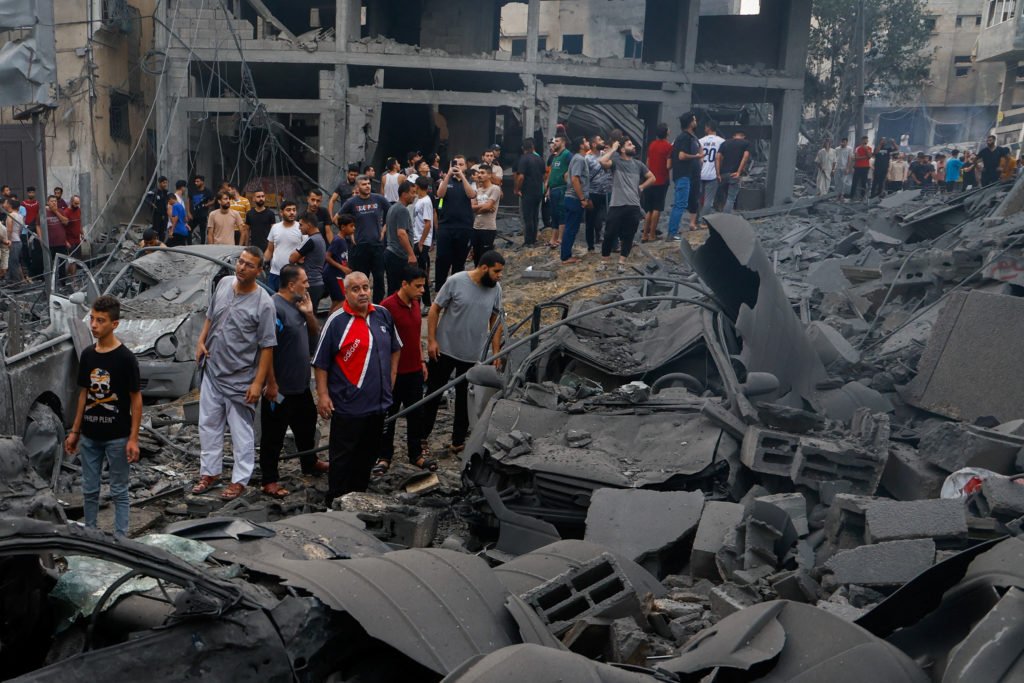
Addressing modern global war tensions requires innovative and collaborative solutions. These strategies must reduce the root causes of conflicts. They must also promote stability and peace. Effective measures can help prevent tensions from escalating into full-scale wars.
1. Diplomatic Negotiations and Peace Treaties
Diplomatic dialogue is a vital tool in conflict resolution. Peace treaties, like the Camp David Accords, show how talks can end rivalries. Establishing regular communication channels between conflicting parties can prevent misunderstandings and build trust. For example, U.S.-China talks aim to ease trade and geopolitical tensions.
2. Strengthening International Institutions
Groups like the UN and NATO are vital for global security. Better resources and decision-making can improve these institutions. It will boost their ability to mediate conflicts. The UN’s peacekeeping missions could be better. But they stabilized places like Sierra Leone and Liberia.
3. Promoting Economic Interdependence
Economic ties can reduce the likelihood of conflict by creating mutual benefits. Trade agreements and partnerships encourage nations to maintain peaceful relations. The EU’s economic integration has greatly reduced the chances of war among its members.
4. Leveraging Technology for Peace
While technology drives modern war tensions, it can also help prevent conflict. AI-powered early warning systems can predict hotspots by analyzing data patterns. Nations can reduce the risks of state-sponsored cyberattacks by collaborating on cybersecurity. This will foster trust in the digital age.
5. Education and Cultural Exchange
Investing in education and cultural exchange programs helps bridge divides between conflicting communities. These initiatives promote understanding, reduce stereotypes, and encourage peaceful coexistence. Fulbright Scholarships and UNESCO projects show that education can foster global harmony.
6. Addressing Root Causes of Tensions
Many conflicts arise from unresolved grievances. They are about inequality, access to resources, or historical disputes. We must address the root causes. This includes fair resource distribution and reparations for past injustices. Regional frameworks, like the African Union’s conflict resolution mechanisms, stress local solutions.
7. Encouraging Grassroots Peacebuilding Efforts
Community-driven initiatives often play a crucial role in reducing tensions. Local leaders and organizations can mediate disputes before they escalate. Rebuilding trust in conflict areas, like Northern Ireland, shows the power of grassroots peace efforts.
Mitigating modern global war tensions requires a multifaceted approach. A mix of diplomatic, tech, and community strategies can create a more stable world. Nations and individuals can, by working together, build a peaceful future.
References
- Nye, Joseph S. The Future of Power. Public Affairs, 2011.
- Kaplan, Robert D. The Revenge of Geography. Random House, 2012.
- Singer, P.W., and Friedman, Allan. Cybersecurity and Cyberwar: What Everyone Needs to Know. Oxford University Press, 2014.
The Future of Global War Tensions
The course of modern global war will likely depend on how nations adapt to geopolitics, technology, and environmental changes. Some trends suggest a rise in conflict. However, there are chances to promote global stability.
1. The Rise of Non-State Actors
Terrorist groups and private military companies are non-state actors. They are playing a more significant role in conflicts. These groups operate outside traditional frameworks, making them harder to regulate. As non-state actors gain influence, governments must act. They need strategies to address these groups’ impact on war tensions. It must not escalate violence.
2. Climate Change as a Conflict Catalyst
Climate change is emerging as a significant driver of conflict. A lack of resources, like water and land, could worsen tensions in unstable regions, like Africa and the Middle East. Nations must work together to find solutions. This will prevent climate-related conflicts from turning into wars.
3. Technological Arms Races
The rapid advancement of military technology poses both opportunities and threats. Artificial intelligence, quantum computing, and space-based weapons could redefine warfare. The risk of an arms race in these areas highlights the need for international agreements to regulate their development and use.
4. Shifting Global Power Dynamics
As China and India grow, the balance of power is shifting. These changes could raise competition or create opportunities to cooperate. Smaller nations may seek protection in an uncertain world. Regional alliances may become more prominent.
5. The Role of Diplomacy and International Cooperation
Diplomacy and international institutions can help reduce conflicts despite rising tensions. We can strengthen global bodies, like the UN and regional frameworks. They can help resolve disputes before they escalate. We must work together on cybersecurity and climate change. It is vital to reduce global tensions.
The future of modern global war tensions is not predetermined. Challenges like tech advances and climate change pose significant risks. But, proactive strategies and international cooperation can create a more peaceful world.
References
- Nye, Joseph S. The Future of Power. PublicAffairs, 2011.
- Kaplan, Robert D. The Revenge of Geography. Random House, 2012.
- Singer, P.W., and Friedman, Allan. Cybersecurity and Cyberwar: What Everyone Needs to Know. Oxford University Press, 2014.
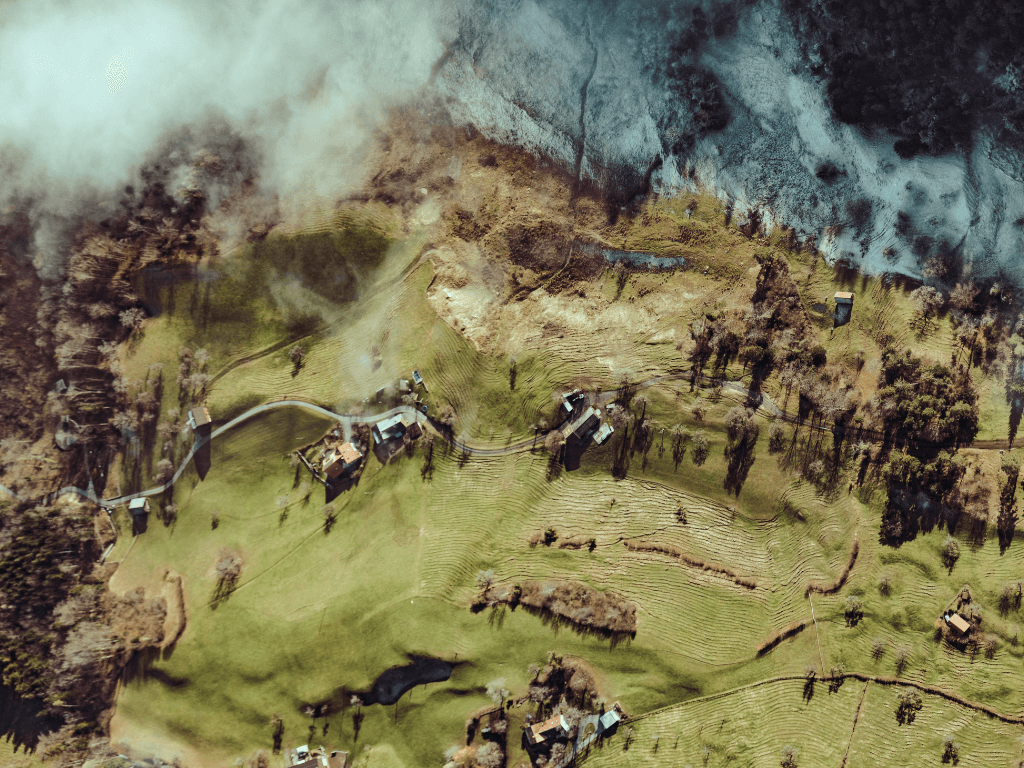
FAQ: Modern Global War Tensions
1. What are modern global war tensions?
Modern global war tensions are conflicts between nations or groups. They arise from geopolitical rivalries, competition for resources, or new technologies. These tensions often involve cyberattacks, sanctions, and proxy wars, not traditional wars.
2. What are the leading causes of modern global war tensions?
The leading causes are geopolitical rivalries, resource competition, and economic gaps. Also, advances in technology, like cyber warfare, play a role. Ethnic and religious divisions also contribute to tensions in some regions.
3. How do current wars in the world affect global stability?
Wars, like the one in Ukraine, disrupt trade and raise energy prices. They also cause humanitarian crises. These tensions hurt cooperation and destabilize regions beyond the conflict zones.
4. What role does technology play in modern war tensions?
Technology has added new dimensions to conflict. These include cyber warfare, autonomous weapons, and information manipulation. It provides tools for prevention, like early warning systems. But, it also increases risks through arms races and misinformation campaigns.
5. Which regions are most affected by global war tensions?
Hotspots include the Middle East, Eastern Europe, the Asia-Pacific, and Africa. These areas face tensions from territorial disputes, resource competition, and internal conflicts.
6. Can global war tensions be resolved?
Global war tensions are high. We can reduce them. We can do this through diplomacy, more vital international institutions, and collaboration. We must address root causes, like resource scarcity and inequality. Promoting economic independence and cultural understanding is also an effective strategy.
7. What is the future of global war tensions?
The future depends on how nations tackle challenges. These include climate change, tech arms races, and shifting power dynamics. We must act and work together to prevent conflicts and promote global stability.
References
- Nye, Joseph S. The Future of Power. Public Affairs, 2011.
- Kaplan, Robert D. The Revenge of Geography. Random House, 2012.
- Singer, P.W., and Friedman, Allan. Cybersecurity and Cyberwar: What Everyone Needs to Know. Oxford University Press, 2014.
Conclusion
Modern global war tensions are a pressing issue with far-reaching consequences. Tensions are reshaping the world from rivalries and resource competition to cyber warfare. They disrupt economies, displace millions, and create challenges beyond conflict zones.
Understanding the causes of these tensions is the first step toward addressing them. The Middle East, Eastern Europe, and Asia-Pacific face unique challenges. They need tailored solutions. Diplomacy, economic cooperation, and tech innovation can reduce tensions and prevent conflicts.
The future of global stability depends on proactive measures. Nations must focus on teamwork over conflict. They should invest in education, cultural exchange, and sustainable resource management. The world can find lasting peace by strengthening institutions and addressing root causes.
While the road ahead is complex, the potential for a more secure future remains within reach. We must do more than resolve today’s disputes over global war tensions. We must build a peace that benefits future generations.
References
Singer, P.W., and Friedman, Allan. Cybersecurity and Cyberwar: What Everyone Needs to Know. Oxford University Press, 2014.
Nye, Joseph S. The Future of Power. Public Affairs, 2011.
Kaplan, Robert D. The Revenge of Geography. Random House, 2012.
